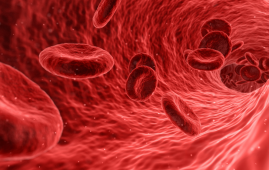

According to new research, people with schizophrenia have a hereditary proclivity to smoke and a lower genetic risk of obesity. The study, which was published in The American Journal of Psychiatry, discovered genetic overlap between this disorder and CVD risk factors, specifically body mass index (BMI) and smoking. Environmental factors are important in the development of obesity and other CVD comorbidities, according to the findings.
Schizophrenia is linked to an increased risk of CVD, and the goal of this study was to better understand the genetic overlap between the two. Linn Rdevand, Ph.D., of the Norwegian Center for Mental Disorders Research at the University of Oslo, led the research team that evaluated recent genome-wide association study (GWAS) results to estimate the number of shared genetic variants and determine particular common regions.
The genetic overlap between schizophrenia and smoking behavior means that people with psychosis susceptibility syndrome may be more affected by nicotine’s addictive properties, the authors note. There was significant genetic overlap between schizophrenia and CVD risk variables, particularly smoking beginning and BMI. There were also some specific common areas between schizophrenia and waist-to-hip ratio, systolic and diastolic blood pressure, type 2 diabetes, lipids, and coronary artery disease.
Because of the genetic connection between schizophrenia and smoking habit, the authors speculate that people with schizophrenia may be more susceptible to nicotine’s addictive qualities.
“In particular, patients with schizophrenia experience greater reinforcing effects of nicotine and more severe withdrawal symptoms during abstinence.” In addition, they note that “smoking may represent a form of self-medication . . . tobacco smoking in people with schizophrenia may involve, to some extent, an attempt to compensate for genetically determined dysfunction of nAChRs.”
The genetic overlap between psychosis susceptibility syndrome and smoking behavior means that people with schizophrenia may be more affected by nicotine’s addictive properties, the authors note.
In keeping with earlier evidence of a higher prevalence of low BMI prior to the onset of schizophrenia, the study findings suggest that people with this disorder are genetically predisposed to having a lower BMI. Obesity, on the other hand, is more common among people with schizophrenia than in the general population.
The findings suggest that factors other than common genetic variations, such as the deleterious effects of antipsychotics and symptoms, depression, and socioeconomic problems that contribute to unhealthy lifestyles, play a substantial role in weight gain in psychosis susceptibility syndrome. Furthermore, genetic variables are likely to play a significant role in antipsychotic-induced weight gain.
The effects of overlapping sites between psychosis susceptibility syndrome and lipids, blood pressure, waist-to-hip ratio, type 2 diabetes, and coronary artery disease were mixed. This means that half of the genetic variations impacting schizophrenia were linked to an increased risk of cardiovascular disease, whereas the other half were linked to a lower risk of cardiovascular disease.
According to the authors, this could imply that subgroups of patients with schizophrenia differ in their genetic predisposition to CVD, which could explain some of the disparities in CVD comorbidity.
more recommended stories
 Fat-Regulating Enzyme Offers New Target for Obesity
Fat-Regulating Enzyme Offers New Target for ObesityKey Highlights (Quick Summary) Researchers identified.
 Spatial Computing Explains How Brain Organizes Cognition
Spatial Computing Explains How Brain Organizes CognitionKey Takeaways (Quick Summary) MIT researchers.
 Gestational Diabetes Risk Identified by Blood Metabolites
Gestational Diabetes Risk Identified by Blood MetabolitesKey Takeaways (Quick Summary for Clinicians).
 Phage Therapy Study Reveals RNA-Based Infection Control
Phage Therapy Study Reveals RNA-Based Infection ControlKey Takeaways (Quick Summary) Researchers uncovered.
 Pelvic Floor Disorders: Treatable Yet Often Ignored
Pelvic Floor Disorders: Treatable Yet Often IgnoredKey Takeaways (Quick Summary) Pelvic floor.
 Urine-Based microRNA Aging Clock Predicts Biological Age
Urine-Based microRNA Aging Clock Predicts Biological AgeKey Takeaways (Quick Summary) Researchers developed.
 Circadian Control of Neutrophils in Myocardial Infarction
Circadian Control of Neutrophils in Myocardial InfarctionKey Takeaways for HCPs Neutrophil activity.
 E-Cigarette Use and Heart Attack Risk in Former Smokers
E-Cigarette Use and Heart Attack Risk in Former SmokersKey Takeaways for Clinicians and Nurses.
 36-Week Pre-eclampsia Screening May Reduce Term Risk
36-Week Pre-eclampsia Screening May Reduce Term RiskA New Preventive Strategy for Term.
 Cardiovascular Risk and Sudden Cardiac Death in Diabetes
Cardiovascular Risk and Sudden Cardiac Death in DiabetesRising Sudden Cardiac Death (SCD) Risk.

Leave a Comment